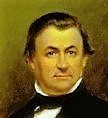Hoosier History Highlights
December 25 – December 31The Week in Indiana History |
|||||||||
   From The Indianapolis News on December 25, 1922:    A beautiful Christmas for all steam and electric railroads radiating from Indianapolis was reported by officials of the lines today. The weekend traffic, in fact, the volume for all of the Christmas shopping season, has been far greater than any previous year in the history of local steam and railway traffic.  Although hourly schedules were preserved, each train was enlarged from one to three and four cars and every train, going or coming, was filled to capacity. It was said that no estimate could be made as to the number of Christmas travelers passing through Union Station in the last several days. |
|||||||||
HOT JOBS
|
|
Statement By Administrator Regan On Bipartisan Funding Bill
WASHINGTON  — In response to Congress passing a bipartisan funding bill, which includes $10.135 billion for EPA’s annual budget, an increase of $576 million above EPA’s previous year’s funding, provides $1 billion in much-needed relief for communities impacted by the recent Hurricanes, and invests $600 million in Jackson, Mississippi’s water system, EPA Administrator Michael S. Reganissued the following statement:
“Our work at the EPA is first and foremost about protecting the wellbeing of all communities. It’s about creating jobs and economic opportunity in every corner of the country. And it’s about safeguarding the right – the freedom – that belongs to all people by virtue of living in the United States to breathe clean air, drink clean water, and lead a healthy life. But we can only accomplish EPA’s vital mission when the agency is equipped with the necessary resources. With the bipartisan funding bill, President Biden and our partners in Congress recognize EPA’s essential role in American life.
The bipartisan funding bill includes the largest annual investment in environmental justice in the agency’s history. Combined with historic investments from the Inflation Reduction Act, EPA is poised to tackle many of our nation’s toughest environmental justice challenges and ensure that all people share in the benefits of a cleaner environment.
The bipartisan funding bill sustains support for our state and Tribal partners through key programs that address legacy pollution, reduce harmful diesel emissions, and fund storm water, wastewater, and drinking water systems. It increases funding for EPA’s Geographic Programs, which help protect and restore our nation’s precious waters – from the Great Lakes to the Puget Sound. The bipartisan funding bill also boosts funding for EPA’s enforcement and compliance work, which is critical to keeping our communities safe and holding polluters accountable.
I’m especially proud that the bipartisan funding bill provides $1 billion in much-needed relief for communities devastated by recent hurricanes and invests $600 million to respond to the drinking water emergency in Jackson, Mississippi.
This summer, the crisis of aging water infrastructure in America rose to the national conscience when more than 150,000 people in a capital city were left without clean drinking water for weeks. The people of Jackson – like all people in this country – deserve access to clean, safe, and reliable water. EPA worked diligently alongside state and local partners to secure an agreement that will help deliver a sustainable water system for Jackson for the long-term. I am grateful to our partners in Congress for sharing this commitment and recognizing the urgency of addressing this longstanding challenge.â€
Final EPA Standards for Heavy-Duty Vehicles To Slash Dangerous Pollution
Beginning in Model Year 2027, EPA’s Clean Trucks Plan will safeguard clean air for millions in communities overburdened by dangerous pollution
WASHINGTON Â the U.S. Environmental Protection Agency (EPA) finalized the strongest-ever national clean air standards to cut smog- and soot-forming emissions from heavy-duty trucks beginning with model year 2027. The new standards, which is the first update to clean air standards for heavy duty trucks in more than 20 years, are more than 80% stronger than current standards.
This final rulemaking is the latest step toward implementing the historic Clean Truck Plan, which is moving America’s highly polluting heavy-duty trucking fleet towards low-carbon and electric technologies. Additionally, historic investments from President Biden’s Inflation Reduction Act and Bipartisan Infrastructure Law are accelerating innovation in zero-emissions truck technology, expanding access to clean school and transit buses, and training workers to install and maintain charging infrastructure.
“EPA is taking significant action to protect public health, especially the health of 72 million people living near truck freight routes in America, including our most vulnerable populations in historically overburdened communities,†said EPA Administrator Michael S. Regan. “But we’re not stopping there. This is just the first action under EPA’s Clean Trucks Plan to pave the way toward a zero-emission future. These rigorous standards, coupled with historic investments from the Inflation Reduction Act and the Bipartisan Infrastructure Law, will accelerate President Biden’s ambitious agenda to overhaul the nation’s trucking fleet, deliver cleaner air, and protect people and the planet.â€
The final standards will reduce deadly smog and soot from new heavy-duty trucks starting with Model Year 2027. EPA estimates that by 2045, the rule will result in the following annual public health benefits:
- Up to 2,900 fewer premature deaths
- 6,700 fewer hospital admissions and emergency department visits
- 18,000 fewer cases of childhood asthma
- 3.1 million fewer cases of asthma symptoms and allergic rhinitis symptoms
- 78,000 fewer lost days of work
- 1.1 million fewer lost school days for children
- $29 billion in annual net benefits
Relative to current rules, the new standards are more than 80% stronger, increase the useful life of governed vehicles by 1.5–2.5 times, and will yield emissions warranties that are 2.8–4.5 times longer. This final rule includes provisions for longer useful life and warranty periods. These provisions guarantee that as target vehicles age, they will continue to meet EPA’s more stringent emissions standards for a longer period of time. The rule also requires manufacturers to better ensure that vehicle engines and emission control systems work properly on the road. For example, manufacturers must demonstrate that engines are designed to prevent vehicle drivers from tampering with emission controls by limiting tamper-prone access to electronic pollution controls.
This rulemaking is based on a robust, complete technical record consistent with the authority set forth in the Clean Air Act. EPA engaged a wide variety of stakeholders, including impacted communities, Tribal, state and local governments, industry leaders, environmental organizations, environmental justice organizations, labor groups, and others to develop final standards that are as strong as possible, take effect as soon as possible and will last as long as possible.
Accelerating a Zero-Emissions Future
Today’s announcement is the first of three major actions being taken under EPA’s Clean Trucks Plan. In the coming months, EPA intends to release the proposals for the remaining two steps in the Clean Trucks Plan. These include the proposed “Phase 3†greenhouse gas (GHG) standards for heavy-duty vehicles beginning in Model Year 2027, as well as the proposed multipollutant standards for light- and medium-duty vehicles beginning in Model Year 2027. These additional rulemakings will consider recent Congressional action, including historic resources for electrification from the Inflation Reduction Act and the Bipartisan Infrastructure Law that EPA anticipates will lead to swift adoption of zero-emission vehicle technologies. Taken together, these rulemakings will put in place stringent long-term standards that will reduce dangerous smog, soot, and climate pollution from heavy-duty vehicles.







 1927   The Walker Theater opened in Indianapolis. Designed by the architectural firm of Rubush and Hunter, the building had a pipe organ, ballroom, and offices for the Madam C. J. Walker Cosmetics Company. A fine example of African Art Deco, the theater is on the National Register of Historic Places and serves as a cultural center for the city.
1927   The Walker Theater opened in Indianapolis. Designed by the architectural firm of Rubush and Hunter, the building had a pipe organ, ballroom, and offices for the Madam C. J. Walker Cosmetics Company. A fine example of African Art Deco, the theater is on the National Register of Historic Places and serves as a cultural center for the city. 1957   Singer Bobby Helms from Martinsville ended a highly successful year in his career with the release of “Jingle Bell Rock.â€Â The song became an instant hit, along with “My Special Angel,†another big song for Helms in a year he also appeared on the Ed Sullivan Show.
1957   Singer Bobby Helms from Martinsville ended a highly successful year in his career with the release of “Jingle Bell Rock.â€Â The song became an instant hit, along with “My Special Angel,†another big song for Helms in a year he also appeared on the Ed Sullivan Show.






